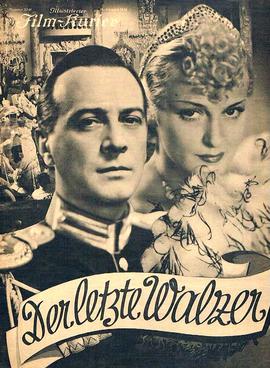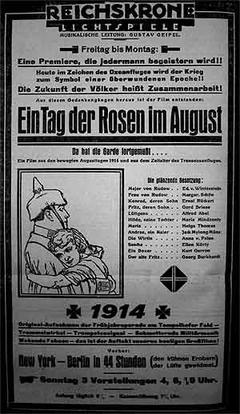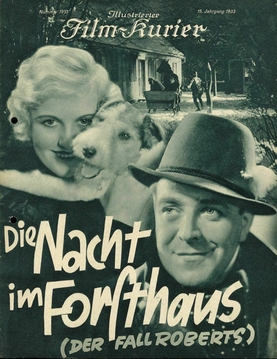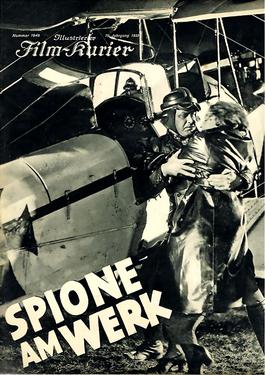
Ernst Deutsch, also known as Ernest Dorian, was a Jewish Austrian actor. In 1916, his performance as the protagonist in the world première of Walter Hasenclever's Expressionist play The Son in Dresden was praised. Deutsch also played the antihero Famulus in Paul Wegener's The Golem: How He Came into the World in 1920. He is known by English-speaking audiences for his role as Baron Kurtz in Carol Reed's 1949 film noir, The Third Man.

Madame DuBarry is a 1919 German silent film on the life of Madame Du Barry. It was directed by Ernst Lubitsch, written by Norbert Falk and Hanns Kräly with the title role taken by Pola Negri and Louis XV played by Emil Jannings. Its alternative title for United States distribution was Passion.

Eduard Clemens Franz Anna Freiherr von Wangenheim, known as Eduard von Winterstein, was an Austrian-German film actor who appeared in over one hundred fifty German films during the silent and sound eras. He was also a noted theater actor.

Ellen Richter was an Austrian-Jewish film actress of the silent era. She was married to Willi Wolff, who directed many of her films. Ellen Richter composed her own production company to create her films. She worked primarily in Germany and was one of the foremost actresses of Weimar cinema.

The White Demon is a 1932 German drama film directed by Kurt Gerron and starring Hans Albers, Gerda Maurus and Peter Lorre. The film is also known by the alternative title of Dope. The sets were designed by the art director Julius von Borsody.

The Last Waltz is a 1934 German operetta film directed by Georg Jacoby, and starring Ernst Dumcke, Max Gülstorff, and Iván Petrovich. It is based on the 1920 operetta The Last Waltz by Oscar Straus. It was remade in English in 1936.
The Woman Worth Millions is a 1923 German silent film directed by Willi Wolff and starring Ellen Richter, Georg Alexander and Hugo Flink. It was released in three separate parts.

A Day of Roses in August is a 1927 German silent film directed by Max Mack and starring Eduard von Winterstein, Margarete Schön, and Ernst Rückert. It was shot at the Johannisthal Studios in Berlin. The film's sets were designed by the art director Kurt Richter. The film takes place in August 1914 at the beginning of the First World War.

The Roberts Case is a 1933 German drama film directed by Erich Engels and starring Hermann Speelmans, Camilla Spira and Eduard von Winterstein. It was shot at the Johannisthal Studios in Berlin.

Lady Godiva is a 1921 German silent historical film directed by Hubert Moest and starring Hedda Vernon and Eduard von Winterstein.

Intrigue or The Martyrium is a 1920 German silent drama film directed by Paul L. Stein and starring Pola Negri and Eduard von Winterstein.

Spies at Work is a 1933 German thriller film directed by Gerhard Lamprecht and starring Karl Ludwig Diehl, Brigitte Helm, and Eduard von Winterstein. A spy film, it is set during the First World War conflict between Austria and Italy.
Mary Tudor is a 1920 German silent historical film directed by Adolf Gärtner and starring Ellen Richter, Hans Adalbert Schlettow and Hanni Reinwald. It is based on the play Marie Tudor by Victor Hugo. In 1922 it was given an American release under the title Judgement.
The Stream is a 1922 German silent film directed by Felix Basch and starring Hermann Thimig and Eduard von Winterstein.
Circus People is a 1922 German silent drama film directed by William Kahn and starring Anita Berber, Charles Willy Kayser and Eduard von Winterstein.

Blonde Poison is a 1919 German silent drama film directed by Hubert Moest and starring Hedda Vernon, Paul Hartmann, and Olga Engl.

The Adventuress of Monte Carlo is a 1921 German silent adventure film directed by Adolf Gärtner and starring Ellen Richter, Anton Pointner and Eduard von Winterstein. It was released in three parts, The Mistress of the Shah, Moroccan Nights and The Stanley Trial.
The White Death is a 1921 German silent drama film directed by Adolf Gärtner and starring Ellen Richter, Eduard von Winterstein and Hans Adalbert Schlettow.
Tragedy of a Marriage is a 1927 German silent drama film directed by Maurice Elvey and starring Isobel Elsom, Alfred Abel and Paul Richter. It is also known by the alternative title of Human Law. It is still extant.

The Schimeck Family is a 1935 German comedy film directed by E.W. Emo and starring Hans Moser, Käthe Haack and Hilde Schneider. It was shot at Johannisthal Studios in Berlin. The film's sets were designed by the art directors Karl Böhm and Heinrich Richter. It is based on the play The Schimek Family by Gustaf Kadelburg, previously adapted into a 1926 silent film and later into a 1957 Austrian film.
This page is based on this
Wikipedia article Text is available under the
CC BY-SA 4.0 license; additional terms may apply.
Images, videos and audio are available under their respective licenses.













